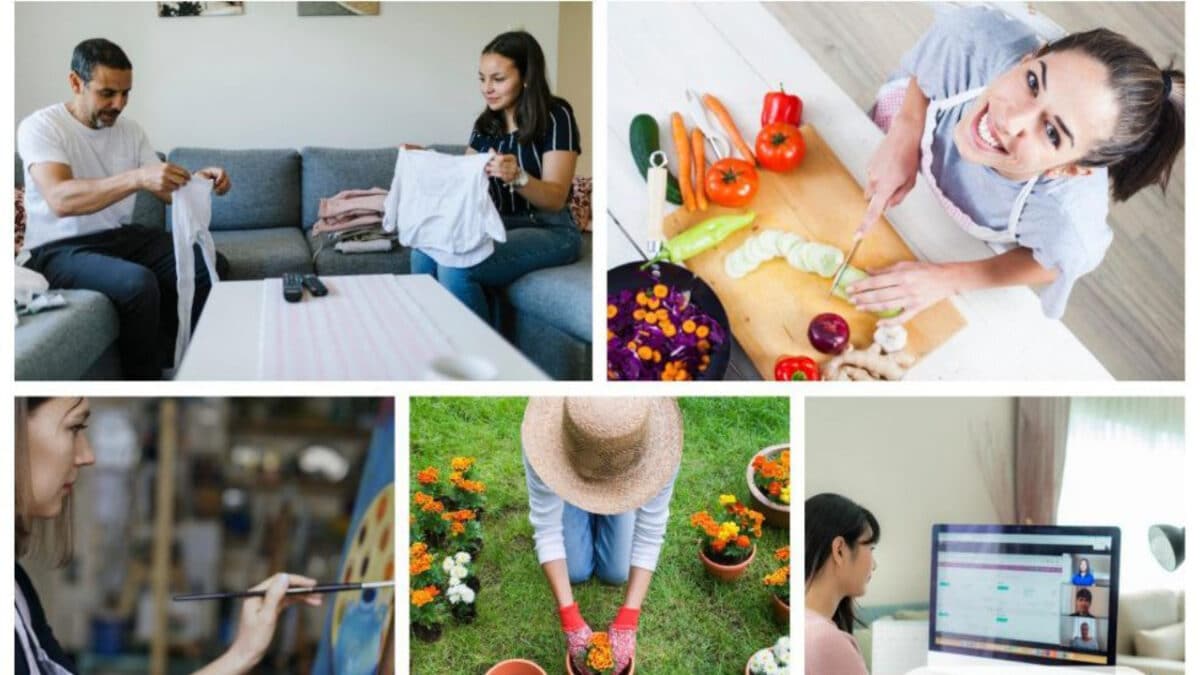By Jamie Laframboise, MSc (OT), OT Reg. (Ont.)
Daily routines, or the regular sequences of activities we follow in our daily lives, are crucial for our health and well-being (Matuska & Barrett, 2014).
Consistent, meaningful routines that maintain balance between work, school, play, rest, and sleep, help create structure in our daily lives, improve our health and well-being, and reduce anxiety and stress (Matuska & Barrett, 2014). Imbalanced routines result in stress and low subjective well-being (Matuska, 2012).
The COVID-19 pandemic has disrupted the routines of people across Canada and across the world.
Public safety measures such as stay at home orders, physical distancing, and mandatory self-isolation are necessary but mean that many of our usual activities are unavailable to us.
We can’t spend our desired amount of time engaged in activities that foster physical well-being, positive relationships, productivity, and personal growth. These are important functions of routines (Matuska & Christiansen, 2008)
Community Occupational Therapists like those at GLA Rehab help injured clients re-engage in meaningful daily routines, but this has become challenging during the COVID-19 pandemic.
Some therapists, including Zafran (2020), have started to look to the teachings of Rachel Thibeault for ideas to enable meaningful routines during the pandemic.
Ms. Thibeault is an Occupational Therapist whose career focused on community-based rehabilitation in post-conflict zones, with refugees and Indigenous populations, who often experience a lack of access to spaces and resources.
While working with these communities, Ms. Thibeault coined the term the “5 occupational gifts” to refer to activities that she believed were integral parts of any repertoire to foster a sense of resilience and control in the context of occupational disruption.
The 5 occupational gifts are (Thibeault, 2011):
- Centering
- Contemplation
- Creation
- Connectedness
- Contribution
Community OTs can use the 5 occupational gifts as a framework for engaging clients in conversations to identify unique activities that embody the qualities of the gifts, which can be incorporated into their daily lives (Zafran, 2020).
By ensuring routines include a variety of these activities, OTs can people foster meaningful, balanced routines within the constraints of public health safety measures, helping to increase feelings of resilience and well-being during challenging times.
Centering activities are ones that are familiar to us (Thibeault, 2011). They aren’t demanding on physical, cognitive, or psychological resources. When performing them, we might feel like we are in a state of “flow”.
Centering activities vary from person to person, but can range from folding laundry, to colouring, to cooking a favourite meal. These activities allow us to feel calm and open.
Contemplation activities evoke a sense of admiration and awe for life and the world (Thibeault, 2011). Examples include nature walks, meditation, and mindfulness.
When engaged in contemplation activities, we reflect on meaning. Other examples can include praying, scrapbooking, or talking about life experiences.
Creative activities allow us to let out our natural desire to explore and create (Thibeault, 2011). These activities allow us to use our imagination and think of new ideas.
People might enjoy painting, writing stories, or engaging in conversations about revolutionary concepts.
Connecting activities strengthen a sense of belonging to a community and to life (Thibeault, 2011). These activities should allow us to feel connected to things that are important to us.
Some people might enjoy participating in activities that allow them to feel connected to sports, family, culture, nature, or a place they identify closely with.
Contribution activities allow us to feel like we have done something for others (Thibeault, 2011). These are activities that allow us to use our strengths and interests to say, do, or make something that is of value in our community.
Some people may enjoy participating in activities related to fundraising, advocating, or producing needed goods.
Now is the best time to start appreciating the calming affect of basic daily tasks, reconnecting with old interests, reflecting on our lives, tapping into our creative tendencies and support each our communities.
Try using Thibeault’s occupational gifts to help your clients do the same!
References
Thibeault, R. (2011). Chapter 10: Occupational gifts. In M. A. McColl (Ed.), Spirituality and Occupational Therapy (2nd ed., pp. 111-120). CAOT Publications ACE.
Matuska, K., & Christiansen, C. (2008). A proposed model of lifestyle balance. Journal of Occupational Science, 15(1), 9-19.
Matuska, K. (2012). Validity evidence for a model and measure of life balance. Occupational Therapy Journal of Research, 32(1), 220-228.
Matuska, K., & Barrett, K. (2014). Chapter 15: Patterns of occupation. In B. A. Boyt Schell, G. Gillen, M. E. Scaffa, & E. S. Cohn (Eds.), Willard & Spackman’s Occupational Therapy (12th ed.) (pp. 163-172). Lippincott Williams & Wilkins.
Zafran, H. (2020). Occupational Gifts in the time of a pandemic. Occupational Therapy Now, 22(4), 5-6. https://caot.ca/uploaded/web/otnow/OT%20Now_JULY_20.pdf#page=7

